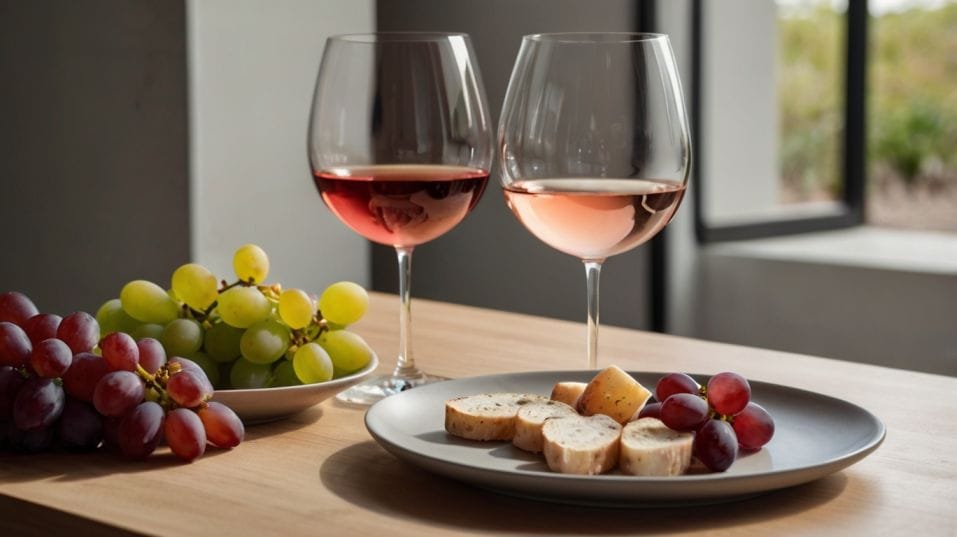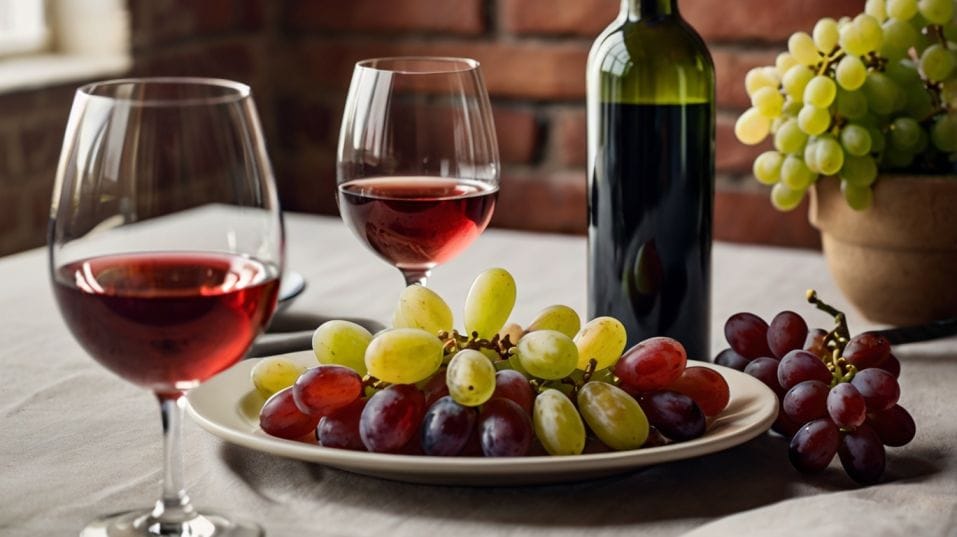A Simple Guide to the Most Popular Grapes
Learn the key wine grapes that shape flavor, style, and structure. Taste smarter, shop with clarity, and build real wine confidence.

Ever wonder why some wines feel bold and others whisper with elegance? The secret isn’t in the label — it’s in the grape. For wine-curious drinkers just starting out, learning the major grape varieties is a shortcut to confidence.
Each one unlocks a different layer of flavor, structure, and style. Skip the gimmicks. Know the grape, and you’ll taste with purpose, shop with clarity, and finally understand why your palate prefers one bottle over another.
Cabernet Sauvignon
Cabernet Sauvignon is the blueprint for structure. This grape produces some of the world’s most age-worthy reds, but its real value is in what it teaches you.
It shows how tannin shapes wine — that firm, drying sensation along your gums — and how oak deepens complexity with notes like cedar, graphite, and tobacco.
You’ll often notice dark fruit like blackcurrant, plum, or blackberry, layered with subtle herbal tones: think green bell pepper or mint, especially in cooler climates.
It’s a foundational grape in Bordeaux blends and dominates in regions like Napa Valley, Coonawarra, and Chile’s Maipo Valley.
Cabernet thrives in warm climates, but you’ll learn most when you taste it side by side: one bottle with obvious oak aging, one without; one from a sunny region, one from a cooler one. Cabernet is never shy.
It fills the palate and leaves you with weight and grip — a perfect place to begin understanding power, structure, and longevity.
Taste Tip: Decant younger Cabernet to soften tannins. Pair with protein-rich dishes (steak, lamb) to see how food balances structure.
Pinot Noir
If Cabernet is about structure, Pinot Noir is about subtlety. It doesn’t force flavor; it reveals it. Pinot shows red fruit — cherry, cranberry, raspberry — but the real story is in its earthiness.
Mushrooms, forest floor, dried leaves, even rose petals or spice box — all of this is Pinot, especially when grown in places like Burgundy or Oregon’s Willamette Valley.
It’s thin-skinned and fussy in the vineyard, which makes it a mirror of its environment. That’s why winemakers and collectors obsess over terroir with this grape. For you, it’s the perfect wine to start tasting more intentionally.
Pinot Noir often has less alcohol, less oak, and lighter body than Cabernet, which helps you focus on nuance — how flavors unfold, how texture evolves, how acid carries the finish.
Taste Tip: Serve slightly cooler than room temperature to preserve its aromatic detail. Try it with dishes that match its delicacy — roasted poultry, grilled salmon, or mushroom risotto.

Merlot
Merlot has nothing to prove — it just wants to be enjoyed. Its bad reputation is mostly about bad marketing.
At its best, Merlot is plush, ripe, and textural, with generous fruit and soft tannins. It often shows plum, cherry, mocha, or baking spice, and unlike Cabernet, it rarely needs years to soften.
Because it's softer and rounder, Merlot is often used to “flesh out” blends, particularly in Right Bank Bordeaux (Saint-Émilion, Pomerol). But it stands strong on its own, especially from regions like Washington State or Tuscany.
This grape helps you understand what makes a wine feel “smooth” or “approachable” — qualities many drinkers love but struggle to describe.
Taste Tip: Pay attention to mouthfeel — Merlot teaches texture. If you find one that feels too flabby, try one with higher acidity or structure for better balance.
Syrah / Shiraz
Bold, spicy, and full of personality, Syrah is where red wine gets dramatic. French Syrah, especially from the Northern Rhône, is intense and savory — you might taste black olive, smoked meat, pepper, or dried herbs layered over black fruit.
Australian Shiraz, especially from Barossa or McLaren Vale, leans richer and riper — dark berries, chocolate, licorice, and toast.
This grape expands your flavor vocabulary fast. It also helps you explore the savory side of wine — not just fruit but elements that feel wild, smoky, or umami-driven.
The texture is often dense and mouth-coating, but quality versions maintain a freshness that keeps them from feeling heavy.
Taste Tip: Look for Syrah with some age (5–10 years) to see how it softens and gains complexity. This is a grape that changes dramatically with time.
Chardonnay
If you want to learn how winemaking shapes flavor, drink Chardonnay. It’s a neutral grape that takes on the character of its region and the winemaker’s choices.
A crisp Chablis grown in limestone soil tastes like wet stones and green apple. A barrel-aged Napa Chardonnay may taste of butter, pineapple, toast, and cream.
This versatility makes it an ideal study in technique: malolactic fermentation (which softens acidity and creates buttery notes), oak aging (which adds toast, spice, and body), and lees stirring (which contributes richness and texture).
No other white grape covers such a wide range of styles.
Taste Tip: Try contrasting a stainless steel–fermented Chablis with an oaked California Chardonnay to understand how choices in the cellar affect structure and flavor.
Sauvignon Blanc
Zippy, herbal, and aromatic, Sauvignon Blanc gives you clarity. Its high acid and fresh flavors make it one of the easiest grapes to identify.
Expect citrus, green apple, gooseberry, and grassy or herbal notes — even jalapeño or capsicum in cooler-climate expressions. Some styles also show minerality or flint, especially from Sancerre or Pouilly-Fumé.
Sauvignon Blanc helps you understand acidity and freshness. These are structural qualities that affect how wine pairs with food, how it feels on the palate, and how long it lingers.
You’ll also notice how winemaking choices — like using stainless steel vs. oak — affect brightness and texture.
Taste Tip: Chill well and drink young. Pair with goat cheese, fresh herbs, or seafood to highlight its natural vibrancy.
Riesling
Riesling is the grape that teaches balance. It’s often associated with sweetness, but the best examples — dry or sweet — have racing acidity that lifts every drop.
You’ll find green apple, citrus, white flowers, honey, and a trademark minerality that can smell like slate or even petrol.
German Rieslings range widely in sweetness, so check the label or ask. This is also one of the most age-worthy white grapes in the world.
Over time, Riesling evolves into something deeper — still bright, but layered with smoke, spice, and richness. It trains you to pay attention to sweetness levels, to acid, and to evolution.
Taste Tip: Start with a dry German Riesling (look for “Trocken”) or an off-dry bottle from the Mosel. These wines reveal precision like few others.
Honorable Mentions
While the grapes above are your core foundation, you’ll encounter others worth knowing:
Zinfandel
Jammy and bold, often high in alcohol.
Tempranillo
Spain’s answer to structured red with leathery, savory charm.
Grenache
Ripe, spicy, often blended for body and softness.
Gewürztraminer
Floral, exotic, great for learning aromatics.
Albariño
Fresh, saline, and citrusy — ideal for seafood pairings.
Each has its own lessons to teach — about climate, body, texture, and flavor expression.
Final Thoughts
Wine isn’t about memorizing labels or chasing trends — it’s about tasting with curiosity. Learning the major grapes gives you a toolkit.
You’ll understand why certain wines feel light or heavy, sharp or smooth, simple or layered. You’ll start to recognize patterns — how climate shifts flavor, how tannin shapes texture, how acidity drives length.
So pick a grape. Pour a glass. Pay attention. Compare styles, ask questions, and build your sense of taste over time.
The best way to learn wine isn’t through study — it’s through experience. Start tonight by trying a grape you’ve overlooked or revisiting one you thought you knew. Let your palate lead. Your wine education starts with what’s in the glass.




